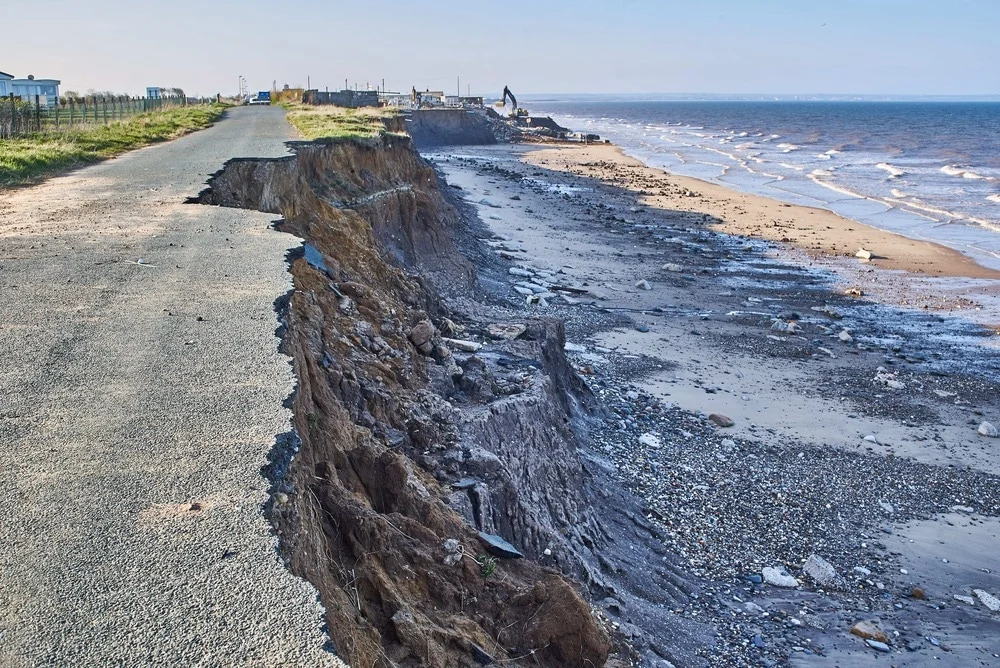1. Understanding Dredging
Dredging projects play a crucial role in coastal management, particularly in enhancing beach width and protecting infrastructure like roads from storm damage. By understanding the mechanisms behind dredging and its implementation, we can better appreciate its significance in safeguarding coastal communities and their economies. This article explores the benefits of dredging for increasing beach width and mitigating the impact of severe storms on coastal roads.
Dredging refers to the process of removing sediments and debris from the bottom of lakes, rivers, harbors, and other water bodies. It is typically conducted to keep waterways navigable, but it is also crucial for coastal management and environmental restoration. Dredging can be performed using various equipment, including mechanical dredgers like backhoes and bucket dredgers, or hydraulic dredgers like cutter-suction dredgers and trailing suction hopper dredgers.
2. The Need for Beach Nourishment
Beaches are dynamic landscapes that naturally erode and accrete. However, human activities and climatic changes have accelerated beach erosion, leading to reduced beach widths and heightened vulnerability to coastal flooding. Beach nourishment, a type of dredging project, involves placing sand on eroding beaches to rebuild them. This not only enhances the aesthetic and recreational value of beaches but also serves as a crucial protective barrier for coastal infrastructure such as roads, homes, and businesses.
3. How Dredging Increases Beach Width
Beach nourishment projects typically involve the following steps:
- Sand Source Identification: Identifying and selecting suitable sediment sources, often from offshore borrow areas, is critical. The sediment characteristics should closely match the natural beach sand.
- Sand Extraction: Dredging vessels extract sand from the identified sources. The method of extraction depends on the location and nature of the sediment.
- Transportation: The dredged material is then transported to the beach nourishment site, either through piping or by hopper dredgers.
- Placement and Contouring: The sand is placed on the beach and shaped according to the design specifications to ensure proper slope and elevation, facilitating natural tidal actions and promoting sand distribution along the beach.
The result is a wider beach that can dissipate wave energy more effectively, reducing the impact of waves on the shore and protecting coastal assets.
4. Mitigating Storm Impact on Infrastructure
State roads and other infrastructure close to the coast can suffer significant damage during severe storms due to storm surges and high waves. A wider beach acts as a buffer that reduces the energy of incoming waves and limits the extent of upland erosion. Here’s how:
- Wave Energy Dissipation: A wide beach with a gentle slope increases the distance over which waves break and dissipate their energy before reaching the shore.
- Reduction of Storm Surge Impact: The elevated beach profile, achieved through nourishment, helps to block and reduce storm surge penetration, protecting infrastructure behind the beach.
- Sand Dunes as Natural Barriers: Dredging projects often include the creation or restoration of sand dunes alongside beach nourishment. Vegetated dunes are effective at absorbing wave impacts and providing additional protection for roadways and other structures.
5. Case Studies
Several successful dredging projects highlight the benefits of increasing beach width:
- Miami Beach, Florida: Regular nourishment projects have helped maintain beach width and protect the coastal tourism economy, crucial for the city’s revenue.
- The Netherlands’ Delta Works: Considered one of the most sophisticated flood defense systems in the world, it includes extensive beach nourishment to protect against sea level rise and storm surges.
6. Challenges and Considerations
While dredging offers significant benefits, it comes with challenges:
- Environmental Impact: The extraction of sand can impact marine habitats. Environmental assessments are crucial to mitigate these effects.
- Maintenance: Beaches need regular nourishment to maintain their protective width, involving ongoing costs and monitoring.
- Source of Sand: Finding suitable sand sources that do not adversely affect the marine environment is increasingly difficult.
7. Conclusion
Dredging and beach nourishment are vital tools in coastal management, significantly enhancing beach width and reducing the potential for storm-related damage to infrastructure like State Roads. By investing in these projects, communities can protect their coastal assets, reduce economic losses from storm damages, and maintain the recreational and environmental value of their beaches. As we move forward, the integration of sustainable practices and advanced technologies will be key to maximizing the benefits of dredging while minimizing its environmental footprint.
